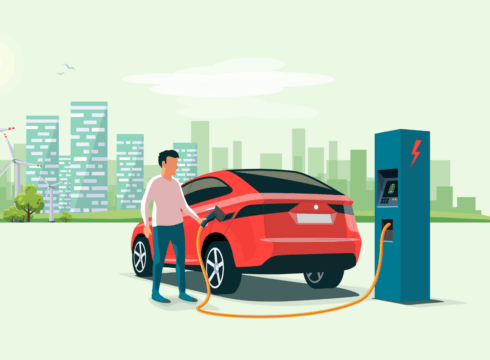Boosted by the government’s ‘Atmanirbhar Bharat’ and ‘Make In India’ initiatives, the Indian auto components industry is growing at a scorching pace
With the auto components industry anticipated to touch the $200 Bn mark by 2026, all are gearing up for an advanced level of localisation of production of auto parts
100% localisation in India is hampered by the shortage of trained manpower, technology and techniques to boost productivity, shortage of infrastructure to manufacture chipsets and policy implementation across levels
Inc42 Daily Brief
Stay Ahead With Daily News & Analysis on India’s Tech & Startup Economy
Boosted by the government’s ‘Atmanirbhar Bharat’ and ‘Make In India’ initiatives, the Indian auto components industry is growing at a scorching pace. The entry of new vehicle brands combined with a growing purchasing power gives a massive thrust to the auto components industry.
Besides, with the auto components industry anticipated to touch the $200 Bn mark by 2026, all are gearing up for an advanced level of localisation of the production of auto parts. Other predominant factors that are contributing to the massive upswing include:
China Plus One Strategy
There is an increasing need and urgency around the world to find an alternative to the singular dependency on China for original equipment.
This is the perfect time to develop plans regarding resource allocation and management of resources, including machines, infrastructure, and supply chains, at optimised costs.
Lessons Learnt From The Pandemic
The pandemic taught a lot across industries. Every nation developed a backend system to cut dependency on limited foreign resources. It supports manufacturers to keep costs under control and deliveries uninterrupted by developing their backend infrastructure.
The Electronics Era Powered By ‘Digital India’ & ‘Make In India’
The electronics sector is and has been the engine of growth. It is one of the pillars of the ‘Make in India’ and ‘Digital India’ programmes of the government. The advanced level of digitisation in the last few years has touched every corner of the country and every single person.
The Automotive Component Manufacturers Association of India (ACMA), supported by the Department of Heavy Industry (DHI) commissioned full-fledged research in its efforts to map the current status and future opportunities for Indian suppliers in the auto electronics market. Information and Communication Technology (ICT) is transforming the idea of mobility.
Increasing Applications In Automobiles
Electronics are designed to lower emissions, improve fuel efficiency, increase safety and provide convenience services like infotainment to customers’ dependence on electronics.
Currently, more than 75% of all electronics used in cars are imported. Concerted efforts from both the government and the industry are required to propel the Indian auto industry into one of the critical GDP contributors in the near future. Systems from the powertrain, safety, telematics, and infotainment are leading categories to be focused on.
Data suggests that the Indian auto components industry grew at a 6% CAGR over FY16-20. The industry size touched $49.3 Bn in FY20 and is estimated to hit $200 Bn by FY26, largely boosted by the EV transformational change. The sector accounts for 2.3% of India’s GDP, enabling India to emerge as the third biggest auto component producer in the world by 2025.
Growth Of The EV Market & Spurt Of Electronic Components
The Automotive Component Manufacturers Association of India (ACMA) has recently stated that among its 800 members, 60% are ready to supply components to electric vehicle manufacturers by the end of the year or 2023.
The Indian EV component market was valued at $536 Mn in 2019 and is projected to grow at a compounded annual growth rate of 22.1% between 2020 and 2030. The auto component industry is expected to invest approximately INR 16,700 Cr in FY23 and INR 20,800 Cr in FY24, of which 25 to 30% is expected to be invested towards electric vehicles. Auto component makers are gearing up to scale up manufacturing of domestically built motors and controllers, battery management systems, chargers and charging stations, remote diagnostic facilities, etc.
Many auto component makers believe that the faster electrification of Indian vehicles will turn out to be an opportunity for them. While the EV sector will be steadily growing, the demand for electric components like smart keys, on the one hand, on the other digital clusters and high-voltage wiring harnesses will also grow, and component makers can bank on the opportunity. To accelerate this growth, the government has been introducing various schemes and encouraging domestic production of auto components for electric vehicles.
Challenges & Remedial Measures
100% localisation in India is hampered by the shortage of trained manpower, application of technology and techniques to boost productivity, shortage of infrastructure to manufacture chipsets and policy implementation across levels and geographies.
Thus it is vital for the government to ensure smooth flow through a friendly policy framework that ensures ease of doing business, the ready availability of capital at lower rates for industries and internationally competitive logistics, coupled with low energy costs.
{{#name}}{{name}}{{/name}}{{^name}}-{{/name}}
{{#description}}{{description}}...{{/description}}{{^description}}-{{/description}}
Note: We at Inc42 take our ethics very seriously. More information about it can be found here.


